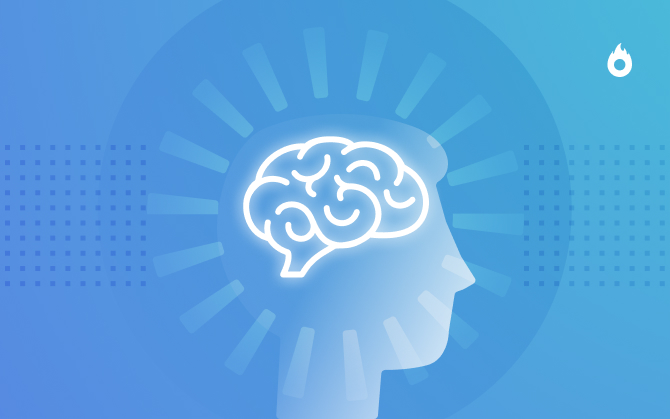
Burnout Syndrome: Learn How to Prevent Professional Burnout
Physical and psychological burnout is common in the workplace. Find out how the Burnout Syndrome can be avoided!

What will we see in this post

Did you know that workers experiencing burnout are 63% more likely to take a sick day?
While it’s increasingly common to see professionals with creative burnout, many companies still treat the problem as taboo.
As social media platforms have evolved, content creators have become more commonplace, generating billions in profits worldwide. However, according to one study, nearly 63% of full-time content creators have experienced burnout, with another 60% of part-timers experiencing the same. Meanwhile, 59% of hobbyists who enjoy uploading content for fun have also admitted to experiencing some form of burnout when creating, uploading, and managing content.
In this post, we’ll deal with the impact of creative burnout on the modern world, how it can affect companies, and the main symptoms to be aware of.
What is burnout syndrome?
Burnout syndrome, or professional burnout syndrome, is considered a psychic disorder defined in 1974 by German psychologist Hebert J. Freudenberger.
It is associated with a state of emotional tension and chronic stress, both caused by the work conditions offered to workers. This covers physical, emotional, and psychological aspects.
It’s worth clarifying a critical point, the origin of the term. Burnout is the physical or mental collapse caused by overwork or stress. Not to be confused with stress, which may appear in different contexts, burnout is caused by exhaustion regarding one’s work activity or environment.
Who can experience burnout syndrome?
Anyone who is too overworked may experience burnout syndrome at one point or another during their life. When an individual cannot provide themselves with downtime and a proper work/life balance, they may experience burnout syndrome symptoms before they realize what’s happening to them.
Why do content creators burn out?
View this post on Instagram
Content creation is one of independent creators and agencies’ most dominating career paths. From creating written content to developing immersive 3D imagery and animations, content creation has expanded significantly since the advent of social media. Millions of content creators share videos showcasing decor ideas and recipes and glimpses into their personal and family lives while earning a living.
Creating content for those who are unfamiliar with the process may sound extremely fun. However, when you have an ongoing content uploading schedule and the need to create fresh, evergreen, unique content regularly, you can quickly burn out if you do not implement a schedule and balanced lifestyle that suits you.
Signs of creative burnout
Although not every case of creative burnout will look the same, there are a few signs that are not always apparent to those who are creating content themselves, such as:
- Not feeling themselves or as creative as they once were;
- Feeling as if they don’t belong in the workplace or that they’re no longer the right fit with their current employer;
- Not feeling motivated and excited to create regularly — feeling as if creating is an unwanted chore;
- Have difficulties focusing on projects and maintaining an optimistic outlook for their company and employer;
- Finds themselves bringing negative feelings and emotions home from work and to work without understanding the root cause;
- Feeling overwhelmed by pressure from advertisers, sponsors, followers, and even subscribers.
How does professional burnout impact those in the workplace?
The costs of professional burnout are high both for organizations as well as for their employees. People with this syndrome usually experience a drastic decline in productivity; they miss opportunities, are more prone to make mistakes, are late in delivering projects, etc.
In turn, business is also affected. It begins to suffer from work-related accidents and an increase in workers’ health expenses, problems with poor management (depending on the person with the syndrome), high employee turnover, etc.
The consequences are the loss of customers, employee health problems, and reduced organizational competitiveness.
What are the main symptoms of creative burnout syndrome?
Burnout can be identified from minor signs. However, they become increasingly evident over time. Below are a few of the main symptoms.
Significant decline in productivity
Imagine that nothing is what it used to be. Productivity has declined, and you can no longer get any work done during business hours.
This, in turn, creates a buildup of tasks, which makes you even more anxious and stressed out because you can’t achieve the desired success.
The decline in production is one of the first symptoms of burnout and is usually followed by low quality in performing tasks that used to be carried out quickly.
Feeling of helplessness
Speaking of stress, the buildup of tasks and responsibilities and the constant pressures associated with not taking advantage of employee skills cause feelings of helplessness.
The lack of expectations makes the workplace a burden for certain people. On several occasions, this generates a physical and emotional collapse and a decline in self-confidence, and employees feel that their work no longer makes sense.
Somatization
Headaches, loss of appetite, tachycardia, low immunity, and shortness of breath are only a few of the problems caused by somatization, which is the physical manifestation of mental disorders.
When they notice that the presence of certain illnesses is frequent, without any apparent reason, employers must observe their workplace. The manifestation of this symptom depends on their level of involvement.
While certain people can manage the situation well, others can’t.
Mood swings
Have you ever asked something to a person at work and they gave you an “irritable” reply? In most cases, this reaction is linked to burnout and work-related demands.
If you’re feeling the symptoms, and anything irritates you, or makes you more sensitive or sad, try to identify if the problem at work is crossing barriers and interfering with socializing with coworkers.
How do you treat the problem?
The World Health Organization classifies Burnout syndrome as chronic workplace stress. It defends a treatment provided through psychotherapy and medication, such as antidepressants and anxiolytics, which a doctor must prescribe.
However, those suffering from burnout can help themselves with a few straightforward attitudes applied to everyday life.
Disconnect from obligations
Disconnect from social media and work whenever you’re away from it. Excessive information which we’re exposed to creates even more stress and immediacy in our everyday life, aggravating psychological burnout.
Enjoy your downtime
Make sure you practice physical activities during your downtime and surround yourself with people who make you feel good. Physical exercise, for example, is an excellent remedy to combat stress, not to mention its health benefits.
Therefore, enjoy your time off from work. Even if you don’t do anything, you can rest. This will help you have the strength to fight burnout symptoms and avoid stress and anxiety buildup in your routine.
Seek help from your superiors
If work is wearing you down, talking to your superiors is a good way of dealing with the issue.
Open up to them about the situation, talk about solutions (such as cutting down on your workload) and if possible, ask for a leave of absence or the anticipation of your vacation period.
Transparency is crucial to gain your superiors’ trust and alerting them about the workplace’s organization.
The problem lies in the business format and the pressures applied to employees in several situations. Thus, a conversation might be essential to circumvent the situation and prevent other people from suffering from the problem.
Why is mental health so important in the workplace?
Human beings are not machines. We feel emotions, get tired, and like to be appreciated. Therefore, burnout syndrome alerts organizations to handle workplace mental health with more care.
If your mind is tired, it loses efficiency and performance. This increases frustration, and important decisions are postponed. Therefore, working more is no use, as the results will probably be below expectations.
At the slightest sign of burnout syndrome, seek appropriate treatment and practices to help you.
Managing content regularly as an independent contractor does not have to mean feeling stressed, overwhelmed, and burnt out at the end of each day. If you’re looking for a better solution to manage your content with subscriptions, eBooks, or even digital courses, consider turning to Hotmart. With Hotmart, maximize your online reach and visibility while simultaneously scaling your sales using a variety of managed solutions in one centralized location. Learn more about Hotmart and the solutions available today for content creators like you.




